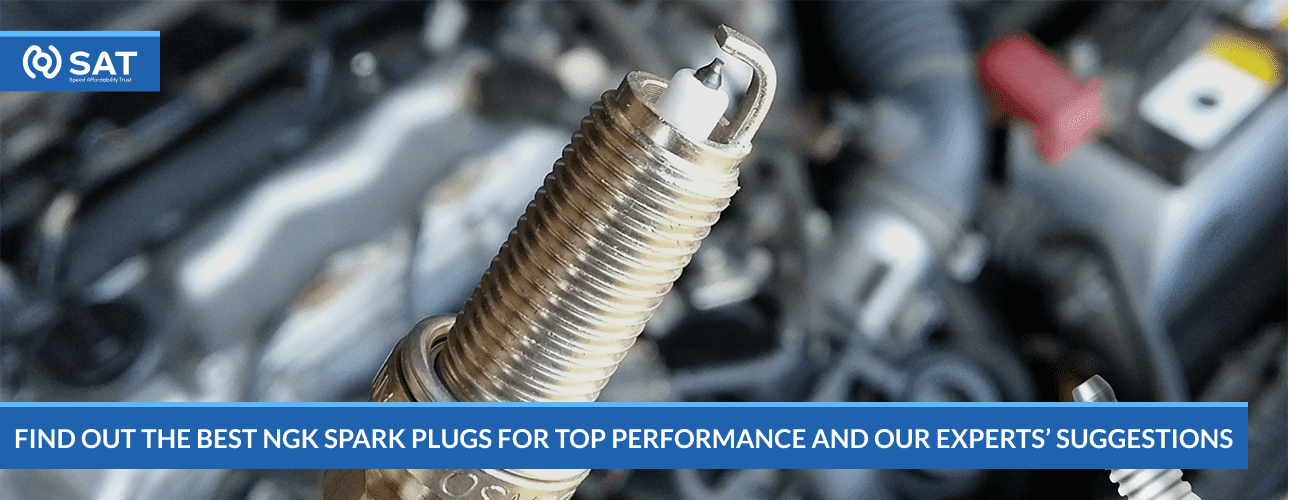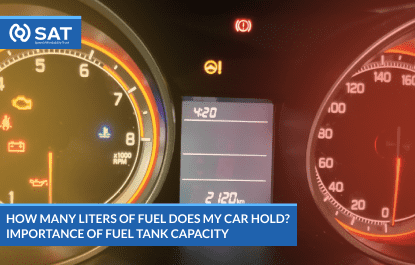
Bridgestone Vs. Michelin Tires – Who’s the Boss
Bridgestone and Michelin are the two industry giants of the tire market.

All the actions inside the engine are carried out by spark ignition plugs, which ignite the spark by igniting the air-fuel mixture in the combustion chamber. The consequence of having defective NGK spark plugs is that a combustion engine may be unstable, use more fuel, and generally have much lower performance.
NGK, the top spark plug producer in the world, has established a reputation for quality and reliability throughout the years. It produces engine-efficient spark plugs. Through innovation and state-of-the-art technology, NGK provides a variety of spark plugs tailored for different engines and driving conditions.
Let’s explore NGK spark plugs, which are used by everyone from everyday commuters to high-performance racers who appreciate their durability, efficiency, and enhanced ignition.
Learn what specialties make Spark Plugs so popular. The following are the key points.
Through devotion to excellence in spark plug manufacturing, NGK has earned the title of a dependable brand renowned worldwide for its superb-quality products. With decades of experience under its belt, NGK has already gained the trust of automotive fans, mechanics, and professionals worldwide.
NGK offers a complete line of spark plugs designed to suit different types of engines, such as cars, motorcycles, trucks, and performance vehicles. Whether for everyday driving or higher performance, NGK has spark plugs designed to give optimal performance and efficiency.
NGK uses sophisticated technology and quality materials to produce its spark plugs. They have electrode designs that are innovative as well as advanced ceramics and insulators designed to be capable of operating at extreme temperatures, pressures, and conditions so that they serve their purpose and last for a long time.
Below are the most important models of NGK Spark Plugs which you should guess on today.
NGK Iridium IX plugs are made for top-performance engines. They have a fine wire iridium center part element that provides better ignition and burn, thus, increased combustion efficiency. They are designed with features that withstand longer usage and the severity of hot temperature which results in better throttle response, fuel efficiency, and engine power.
| Pros | Cons |
| Enhanced engine performance.Improved fuel efficiency.Superior ignition reliability. | Higher cost when it comes to conventional spark plugs.Requires a cautious installation process so as not to damage the fragile iridium electrode. |
NGK LPG Laser Platinum spark plugs have been developed to produce a sustained spark capable of surviving extreme temperatures ranges and loading cycles. They have a DT at the platinum electrode and laser-welded tip of platinum. This type of electrode supplies the spark and the full combustion, resulting in an engine performance that is solid and clean. This leads to fewer emissions during the life span of the machine.
| Pros | Cons |
| Long-lasting performance.Reliable ignition in all circumstances.Reduced maintenance intervals. | The high initial price of such spark plugs compared to the standard ones.It may not do much if performance-specific engines are concerned. |
NGK G-Power Platinum spark plugs as a part of the range premium, are adjusted to offer great performance as well as a low price value. High-end plugs with their industry-leading electrodes, which can practically never wear out, supply this electric current and burning efficiency, and thus are suitable for purposeful vehicles.
| Pros | Cons |
| Cost-effective solution.Reliable ignition and combustion.It can be the weakest engine type. | Might not have the same performance benefits as more expensive ones.The durability is not as high as the spark plug premium options. |
Spark plug installation is not a hard operation, but it needs to be accurate and perfect. First, gather all the essential tools, such as a socket wrench and spark plug socket. Begin by cooling down the engine to prevent injury. Be sure to check that the spark plugs are tight enough. This way, they do not get threaded during the installation.
Remember to inspect your spark plug gap with an NGK spark plug gauge before installing. Use a small amount of anti-seize lubricant to avoid seizing. New plugs should be tightened by hand to prevent a thread from not fitting. A torque wrench is the right tool for tightening to the factory’s specifications. Put the wires back and switch the engine on to see if it’s a working car.
Compatibility: It is crucial to ensure that the spark plugs you choose to buy are according to your vehicle’s engine and model and make for proper fit and functioning.
Heat Range: Think about its heat range, which represents its ability to remove heat from the combustion chamber. Appropriate heat range selection is a key consideration for optimum performance and to prevent pre-ignition or engine knocking.
Electrode Design and Material: Assess if the electrode design and material selection in spark plugs are the same because this directly affects performance. NGK models feature electrodes of various designs and materials, such as iridium, platinum, or others that show differences in durability and efficiency.
SAT Japan goes beyond the ordinary and provides essential information to individuals who want to select the most fitting ones for their cars. Through complete product information, compatibility checks, and expert consultations, SAT Japan assists customers in choosing spark plugs that best suit their purpose.
With SAT Japan’s skills and advice, users can find adequate spark plugs for their vehicles that would improve the performance and reliability of their vehicles.
Ultimately, NGK spark plugs provide excellent performance, quality, and reliability, making them the first choice among car owners worldwide. Made to work for all the different engine mechanisms and the everyday need for spark plugs, the advanced technology and material are the keys to their standing out. Get more details on SAT
Choosing the appropriate spark plugs is vital for achieving the maximum power from the engine and saving fuel. While making your selection, consider variables ranging from compatibility to heat range and electrode design.
These plugs are technologically advanced and contain high-quality materials, which ensures a higher level of quality, reliability, and performance.
It’s not recommended to use these plugs with any other brands. Due to specification differences, this can cause engine performance and reliability problems.
To ensure the engine’s top performance and fuel efficiency, you should change these plugs every 30,000 to 100,000 kilometers or according to the manufacturer’s requirements.

Bridgestone and Michelin are the two industry giants of the tire market.

Considering the recent developments in the world order, oil prices have increased significantly over the last decade. During such times, being well-researched about your car fuel tank and its features can be extremely useful in cost-cutting. Knowing about your car’s fuel capacity may not seem too significant at face value, but such a basic factor […]

Subaru is widely known for being a highly reliable manufacturer of vehicles that are simultaneously safe and stylish. Because of Subaru Models‘ performance and reliability, these vehicles have a loyal fanbase that swears by them. However, there are some limitations with their boxer engine, and one of the faults in some Subaru vehicles is the […]